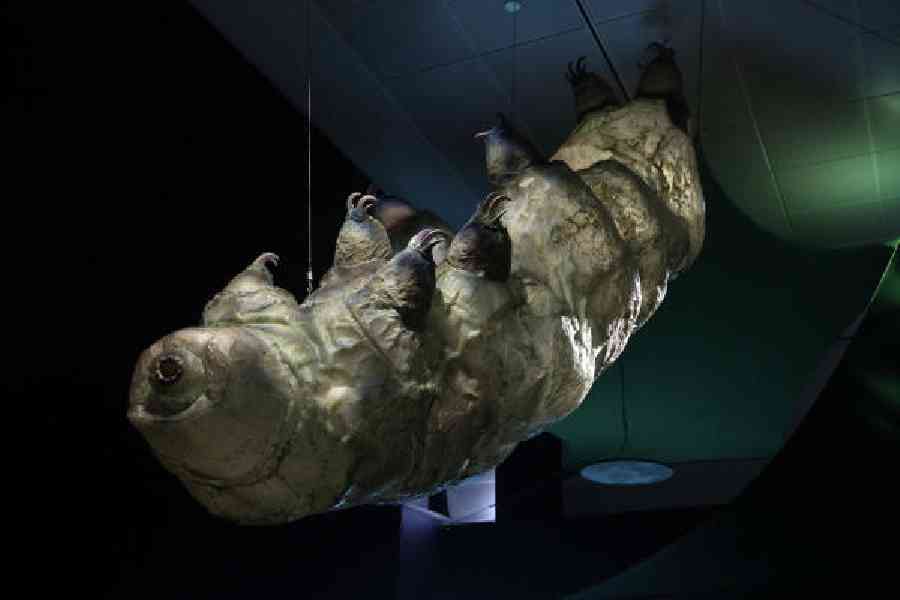Molecular biologist Anne De Cian gathered moss from her garden, soaked them in water and placed them under a microscope. Her children gazed at the strange, eight-legged creatures clambering over it. “They were impressed,” De Cian said.
She brought the tardigrades to her laboratory at the French National Museum of Natural History, Paris, where she and her colleagues hit them with gamma rays. The blasts were hundreds of times greater than the radiation required to kill a human. Yet the creatures survived, going on with their lives as if nothing happened.
Tardigrades are masters of molecular repair, able to quickly reassemble piles of shattered DNA, says new research.
Over the decades, scientists found tardigrades could withstand crushing pressure, deep freezes and even a trip to outer space.
In 1963, French researchers found that tardigrades could withstand massive blasts of X-rays. Later, it was found some species can withstand radiation 1,400 times higher than what’s required to kill a person.
Radiation is deadly because it breaks apart DNA strands. A high-energy ray that hits a DNA molecule can cause direct damage; it can also wreak havoc by colliding with another molecule inside a cell. That altered molecule may then attack the DNA.
In 2016, University of Tokyo, Japan, researchers discovered a protein called Dsup, which appeared to shield tardigrade genes from energy rays and errant molecules. They tested their hypothesis by putting Dsup into human cells and pelting them with X-rays. The Dsup cells were less damaged than cells without the protein.
That prompted De Cian’s interest. She studied the tardigrades from her Paris garden, along with a species found in the UK and a third from Antarctica. Gamma rays shattered the DNA of the tardigrades, yet failed to kill them.
Courtney Clark-Hachtel, a biologist at the University of North Carolina at Asheville, US, and her colleagues independently found that the tardigrades ended up with broken genes. Their study was published in Current Biology.
These findings suggest Dsup on its own does not prevent DNA damage, although it’s possible the proteins provide partial protection. It’s hard to know because scientists are still figuring out how to run experiments with tardigrades. They cannot engineer the animals without the Dsup gene, for example, to see how they would handle radiation. “We’d love to do this experiment,” said Jean-Paul Concordet, De Cian’s collaborator.
Both new studies revealed another trick: tardigrades quickly fix their broken DNA.
After they are exposed to radiation, their cells use hundreds of genes to make new proteins. Many of these are familiar; other species — ourselves included — use them to repair damaged DNA. The tardigrades make these repair proteins in astonishingly large amounts. “I thought, ‘This is ridiculous,’” Clark-Hachtel recalled when she first measured their levels.
De Cian and her colleagues also discovered that radiation causes tardigrades to make a number of proteins not seen in other animals. For now, their functions remain mostly a mystery.
The scientists picked out a particularly abundant protein, called TRD1. When inserted in human cells, it seemed to help the cells withstand damage to their DNA. Concordet speculated that TRD1 may grab onto chromosomes and hold them in their correct shape, even as their strands start to fray.
Studying proteins such as TRD1 won’t just reveal the powers of tardigrades, Concordet said, but could lead to new ideas about how to treat medical disorders. DNA damage plays a part in many kinds of cancer, for example.
Concordet still finds it bizarre tardigrades are so good at surviving radiation. “Why are these organisms resistant to radiation in the first place?” he said.
This superpower could just be an extraordinary coincidence, he said. Dehydration can also break DNA, so tardigrades may use their shields and repair proteins to withstand drying out.
Even the disappearance of the dew each morning might be a catastrophe. “We don’t know what life is like down there in the moss,” Concordet said.
NYTNS










